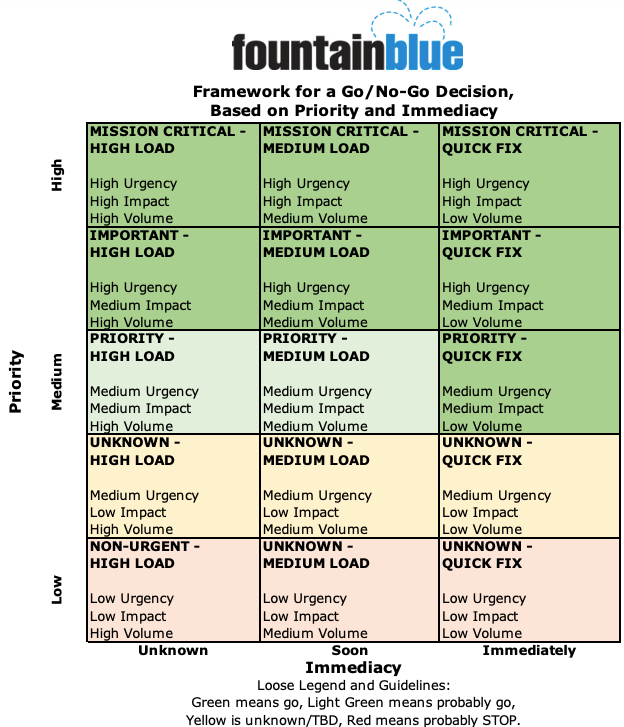The Mole Giving YOU the Raspberry
Have you ever played that boardwalk game with the hammer and the moles giving you raspberries? You collect points by pounding them with your mallet before they disappear back into their holes.
Management can feel like that sometimes - you have many people needing your attention but limited capacity to address them all! When I have many tasks vying for time and resources, I rank requests based on the urgency of the need, the impact of the work, and the volume of work and resources it takes to fulfill them.
The chart below illustrates how to prioritize requests based on these criteria. Perhaps this chart will help you prioritize your projects and tasks while helping you navigate communication with others about why their requests may not be your current priority. It’s my hope that this framework will help you create guardrails on how much time, energy and resources you can sustainably devote to your work so you can focus on building momentum that’s in alignment with your corporate mission and personal values.





